Related Research Articles

MAME is a free and open-source emulator designed to recreate the hardware of arcade game systems in software on modern personal computers and other platforms. Its intention is to preserve gaming history by preventing vintage games from being lost or forgotten. It does this by emulating the inner workings of the emulated arcade machines; the ability to actually play the games is considered "a nice side effect". Joystiq has listed MAME as an application that every Windows and Mac gamer should have.
The XGameStation is a series of embedded systems, primarily designed as a dedicated home video game console, created by Andre LaMothe and sold by his company Nurve Networks LLC. Originally designed to teach electronics and video game development to programmers, newer models concentrate more on logic design, multi-core programming, game programming, and embedded system design and programming with popular microcontrollers.
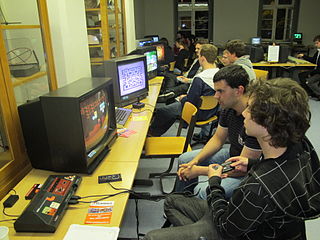
Retro gaming, also known as classic gaming and old school gaming, is the playing and collection of obsolete personal computers, consoles, and video games. Usually, retrogaming is based upon systems that are outmoded or discontinued, although ported retrogaming allows games to be played on modern hardware via ports or compilations. It is typically for nostalgia, preservation, or authenticity. A new game could be retro styled, such as an RPG with turn-based combat and pixel art in isometric camera perspective.

Minimig is an open source re-implementation of an Amiga 500 using a field-programmable gate array (FPGA).
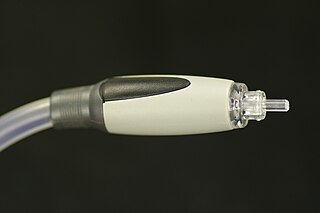
TOSLINK is a standardized optical fiber connector system. Also known generically as optical audio, its most common use is in consumer audio equipment, where it carries a digital audio stream from components such as CD and DVD players, Digital Audio Tape recorders, computers, and modern video game consoles, to an AV receiver that can decode two channels of uncompressed pulse-code modulated (PCM) audio or compressed 5.1/7.1 surround sound such as Dolby Digital or DTS Surround System. Unlike HDMI, TOSLINK does not have the bandwidth to carry the uncompressed versions of Dolby TrueHD, DTS-HD Master Audio, or more than two channels of PCM audio.
The IGEPv2 board is a low-power, fanless single-board computer based on the OMAP 3 series of ARM-compatible processors. It is developed and produced by Spanish corporation ISEE and is the second IGEP platform in the series. The IGEPv2 is open hardware, licensed under a Creative Commons Attribution-Non Commercial-ShareAlike 3.0 unported license.

The GP2X Caanoo, more commonly known as Caanoo, stylized CAANOO, is an open source, Linux-based handheld video game console and portable media player developed by the South Korean company GamePark Holdings. It was released on August 16, 2010 in South Korea and were also sold throughout Europe. It is the successor to the GP2X Wiz, and was showcased at the Electronic Entertainment Expo 2010. The device's launch price was about US$150, which didn't reach any retail stores in North America.

The PandaBoard was a low-power single-board computer development platform based on the Texas Instruments OMAP4430 system on a chip (SoC). The board has been available to the public at the subsidized price of US$174 since 27 October 2010. It is a community supported development platform.
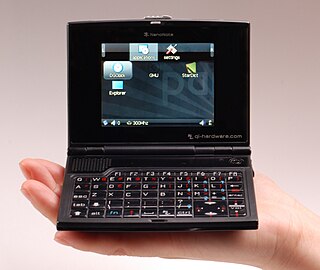
The Ben NanoNote is a pocket computer using the Linux-based OpenWrt operating system. An open-source hardware device developed by Qi Hardware, it has been called possibly "the world's smallest Linux laptop for the traditional definition of the word.". In addition, the Ben NanoNote is noteworthy for being one of the few devices on the market running entirely on copyleft hardware.

1541 Ultimate is a peripheral, primarily an emulated floppy disk and cartridge emulator based on the FPGA Xilinx XC3S250E, for the Commodore 64 home computer. It became available in 2008.
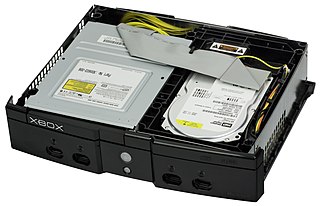
The Xbox technical specifications describe the various components of the Xbox video game console.

Banana Pi is a line of single-board computers produced by the Chinese company Shenzhen SINOVOIP Co., Ltd., its spin-off Guangdong BiPai Technology Co., Ltd. and supported by Hon Hai Technology (Foxconn).
RetroN is a series of video game consoles created and developed by Hyperkin which allows users to play old video games from consoles such as the Nintendo Entertainment System and the Super NES. Since the release of the RetroN 5, they have been connected via HDMI. The latest in the series, RetroN Sq, was released in 2021.

The Analogue Nt mini is a video game console designed and manufactured by Analogue, Inc. It was designed to play games for the Nintendo Entertainment System and the Famicom, like the original Analogue Nt. Unlike the former, the Nt Mini uses an FPGA for processing.

Hyperkin is an American video game peripheral manufacturer and distributor, founded in 2006, based in Los Angeles, California. They distribute accessories for major gaming consoles, in addition to creating clone consoles that play retro games with modern resolutions and on modern devices, most notably the RetroN series of clone consoles. As with most other NES clones, Hyperkin's NES clones suffer from imperfect sound due to a design flaw in the sound hardware.
The Libre Computer Project is an effort initiated by Shenzhen Libre Technology Co., Ltd., with the goal of producing standards-compliant single-board computers (SBC) and upstream software stack to power them.
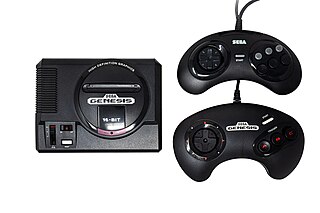
The Sega Genesis Mini, known as the Mega Drive Mini in regions outside of North America, is a dedicated console modeled on the Sega Genesis. The Mini emulates the original console's 16-bit hardware, and includes 42 games made available through emulation software by M2. It was released in North America and Japan in September 2019 and in Europe and the Middle East in October 2019. A follow-up, Sega Genesis Mini 2, was released in October 2022 and includes 60 games from the Genesis and Sega CD.

ZX Spectrum Next is an 8-bit home computer, initially released in 2017, which is compatible with software and hardware for the 1982 ZX Spectrum. It also has enhanced capabilities. It is intended to appeal to retrocomputing enthusiasts and to "encourage a new generation of bedroom coders", according to project member Jim Bagley.

Evercade VS is a video game console developed by UK company Blaze Entertainment. It is an upgraded home console version of the original Evercade handheld that introduces multiplayer functionality. It was released in December 2021 in Europe, and on 25 February 2022 in the United States.
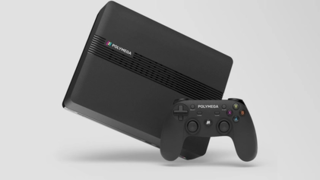
Polymega is a home video game console developed by American company Playmaji, Inc. It is a retro gaming console offering backwards compatibility with several CD-based platforms: PlayStation, TurboGrafx-CD, Neo Geo CD, Sega CD, and Sega Saturn. It also supports cartridge-based platforms, including Nintendo Entertainment System (NES), Sega Genesis, Sega 32X, Super Nintendo Entertainment System (SNES), and Nintendo 64. It includes a built-in CD drive, while separate add-ons known as Element Modules provide support for cartridge-based games. It was announced as the RetroBlox in 2017, and faced numerous delays before being released in September 2021.
References
- ↑ Grant, Christopher (30 August 2021). "MiSTer 101: A classic gaming device to rule them all". Polygon. Retrieved 29 May 2022.
- ↑ "MiSTer wiki". github.com/MiSTer-devel/Main_MiSTer/wiki. Retrieved 2022-04-09.
- ↑ Fahey, Mike (2 September 2021). "And Now, The Ultimate Retro Gaming Device". Kotaku. Retrieved 29 May 2022.
- 1 2 "The FPGA retro revolution". Wireframe magazine. Retrieved 2022-04-18.
- ↑ "MIST - a FPGA based aMIga and ST". 2015-10-27. Archived from the original on 27 October 2015. Retrieved 2022-04-09.
- ↑ McFerran, Damien (11 February 2021). "Hardware: MiSTer FPGA Review - A Tantalising Glimpse Into The Future Of Retro Gaming". Nintendo Life. Retrieved 29 May 2022.
- ↑ "What does MiSTer stand for? Is it an acronym? - MiSTer FPGA Forum". www.misterfpga.org. Retrieved 2022-04-09.
- ↑ "MiSTer license". github.com/MiSTer-devel/Main_MiSTer/blob/master/LICENSE. Retrieved 2022-04-09.
- ↑ Byford, Sam (11 March 2021). "Building the ultimate retro computer". The Verge. Retrieved 29 May 2022.
- ↑ Thornton, Sarah (November 1, 2019). "Retro computing with FPGAs and MiSTer | Opensource.com". opensource.com. Retrieved 30 May 2022.
- ↑ Brookes, Tim. "Why FPGAs Are Amazing for Retro Gaming Emulation". How-To Geek. Retrieved 29 May 2022.
- ↑ "MiSTer FPGA: The Future of Retro Game Emulation and Preservation?". RetroGaming with Racketboy. 20 February 2019. Retrieved 30 May 2022.
- 1 2 3 4 5 "MiSTer FPGA Documentation - Addon Boards".
- ↑ "MiSTer FPGA - Tinker, Tailor, Solder, Sprite". somethingawful.com. Retrieved 30 May 2022.
- ↑ "Console Cores - MiSTer FPGA Documentation".
- ↑ "Computer Cores - MiSTer FPGA Documentation".
- ↑ "Arcade Cores - MiSTer FPGA Documentation".